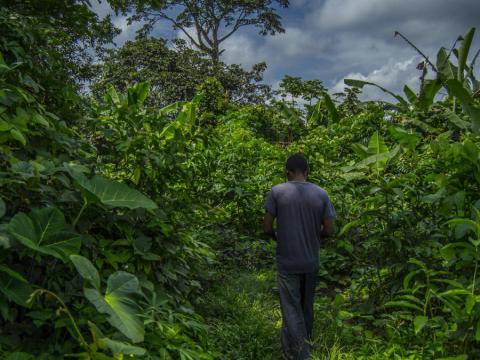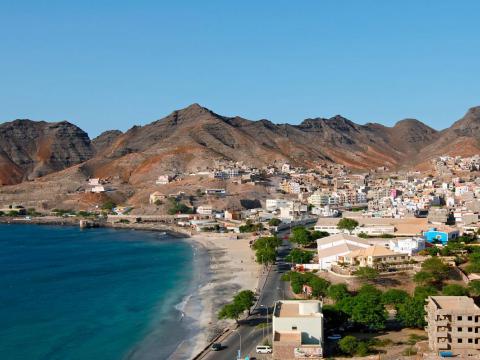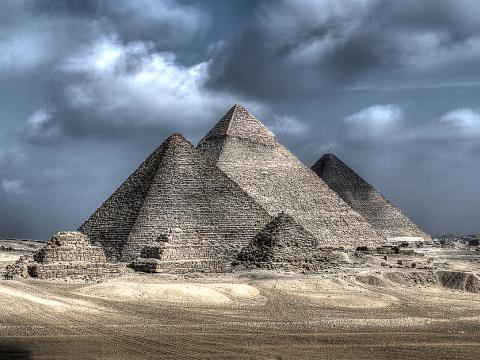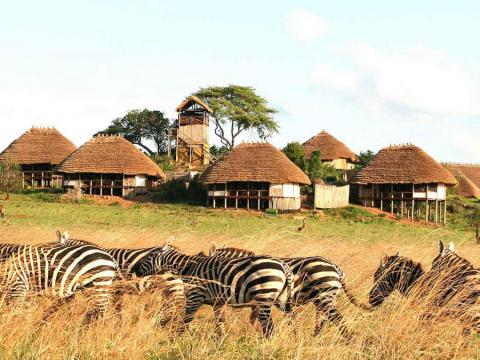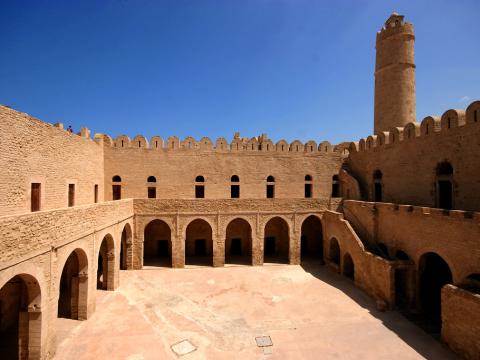Africa in a Nutshell
Though commonly treated as a monolithic continent with a single country, Africa is actually an incredible diverse continent home to 54 different countries. Home to bustling metropolises, scenic landscapes, and diverse fauna, the region has the potential to provide unforgettable and distinct experiences for all visitors.
The size of the African continent is often portrayed incorrectly by world maps, which tend to depict it as smaller relative to other other countries than it actually is. Spanning over 8,000 kilometers (5,000 miles) from North to South, and 7,500 kilometer (4,800 miles) from Eastern to Western coasts, the area that Africa encompasses is larger than China, India, the United States, and much of Europe, all combined.
Africa is also surrounded by various bodies of water. To the north lies the Mediterranean Sea; to the west is the Atlantic Ocean; to the northeast lies the Red Sea; and to the southeast, lies the Indian Ocean. The landscape of the region is also noteworthy. Some of the most magnificent natural geographical wonders are found in Africa.
Unique areas include Nile River, which, at 6,650 kilometers (4,100 miles), is the longest river in the world. Another African river, the Congo River, is the deepest rivers in the world at 230 meters (750 feet). Africa is also has several mountain ranges which includes Mount Kilimanjaro in Tanzania, the tallest free-standing mountain in the world at a height of 5,890 miles (19,340 feet).
Africa is also home to a vast array of various cultures, ethnicities, languages, and modes of life. Africa is also the second largest and second most popular continent in the world. It is actually much larger than Russia, take a look:

However, despite being so heavily populated - there are 1.2 billion people living in Africa - many parts of Africa are still largely undeveloped. The sheer land mass and varying landscape has made it difficult to build and maintain infrastructure, leading to lack of development in many African countries. Just to developing modern infrastructure in the Democratic Republic of the Congo would likely take nearly 25 years. Perhaps more than any other place on Earth, Africa is a unique blend of ancient and modern worlds.
Brief history
Historical evidence and expert analysis supports the claim that Africa was the birthplace of human origins, including many early ancestors such as the Hominidae clade (great apes), Sahelanthropus tchadensis, Australopithecus africanus, A. afarensis, Homo erectus, H. habilis, and H. ergaster. The earliest traces of Homo sapiens, which have come to be known as the modern human species, emerged in what is known today as the country of Ethiopia roughly 200,000 years ago.
Despite being the origins of the human species, Africa had a relative sparse population of human inhabitants for most of human history, at least until about 150 years ago. Even at the turn of the 20th century, Africa had a population of only 133 million people, whereas regions such as Europe and China had populations over 400 million. However, as Western style society and medical advancements took hold in Africa, population rates increased steadily. In Africa, malaria is believed to be one of the most significant factors restricting population growth in prehistoric times.
According to archaeologists, Neolithic communities developed around 5,000 BC as a result of improved domestication of animals, greater agricultural efficiency, the construction of pottery, and use of smelting processes to extract metal ore from natural resources.
Historical written records of African civilizations first appear in Egypt, where literacy developed around 3,300 BC during the time of Pharaonic rule. The pharaohs of Egypt had one of the world’s earliest and longest lasting civilizations. As Egypt began to decline in the subsequent centuries, new centers of civilization were emerging throughout the region. Perhaps one of the more significant focal points of civilization was the ancient city of Meroe, renown for its innovations in iron working, which ultimately spread throughout the world and had widespread cultural and social consequences.
North Africa’s Mediterranean coast was ultimately conquered by the Roman Empire, as well as culturally and economically integrated into the Roman system. Christianity had spread across Roman conquered African territory by 300 AD, and eventually spread beyond Roman territory.
In the early 7th century, a new civilization spread into North African territory: the Arabian Islamic Caliphate. The political center of Islamic civilization in the Mediterranean shifted to Qayrawan in North African when Damascus fell in the 8th century. During this period, Islam spread through North Africa to sub-saharan Africa.
Different states and polities proliferated during the periods preceding Europe’s colonial invasion. Empires included Ghana (not to be confused with modern day Ghana), Mali, Songhay, Kanem, and other prosperous civilizations that flourished during the eighth century. These new societies developed primarily around early conceptions of marketplaces and trade exchange, as each region had a specific resource that another did not. Whether this was gold from the south, salt from the north, or lumber from the forested western regions, this mercantilist system operated at its peak between the 12th and 16th centuries.
With their relatively advanced capabilities and surmounting military might, these empires were able to utilize their geographical position and strength to ensure safe travels along trade routes, and make money through taxes and tributes from merchants who required the protection. Although these empires have long since disappeared from the continent, civilizations such as the Ausa and Kanem states have maintained their survival, despite being weakened by the onset of raid and “holy war” from Muslim Fulani and other such groups.
Other polities continued to emerge, as access to trade, economic resources, and opportunities began to expand. These civilizations became known for their extensive trade operations, especially as routes began to be established between Africa, and the surrounding European and Asian continents. Aksum and other Swahili towns on the eastern coast became among the first to engage in trade with Arabia, and the other countries that existed as one continued eastwards across the Indian Ocean.
Goods that were prominent and significant in these trade routes included valuable resource such as ivory, gold, and in large part, slaves, as was seen in empires such as Monomatapa. The region of the great lakes comprised of the most powerful nations of the time, which included Nyoro, Ganda, Rwanda, and others. Further south, more states developed in the Angola-Congo region, including the kingdom of Kongo, which would later become colonized and Christianized by Portuguese missionaries.
As Saharan states continued to rise in prominence, forest-region empires such as Asante, Benin, and the Yoruba states of Nigeria and Dahomey also grew. Despite the prosperity achieved by many of these states through providing resources and commodities to the European continent, the established trade routes and links back to Africa became a concern for major colonial powers.
African polities and states began to lose independence to European imperial powers in the late 19th century. Only two states were left fully independent: Ethiopia and Liberia. During the Berlin Conference of 1884-85, European power agreed to end their conflicts over territory in Africa, and divided the land between themselves. The political divisions they agreed upon still exist today, but results in massive struggles and conflict because they do not reflect the cultural and political boundaries that existed prior to European colonialism.
Today, Africa has 54 sovereign states. It is still too early to evaluate the post-colonial history of Africa, which has been characterized by a series of attempts to construct new democracies that have in most cases failed. Europe divided Africa with complete disregard for the cultures and ethnic groups, often dividing a peoples between 2 or more countries and forcing peoples with a history of fighting or differing cultural backgrounds and religions into one country.
Furthermore, a lack of training in civil service before and even after independence left most countries with dysfunctional governments. Leaders have frequently favored their own ethnic groups over others for jobs and financial compensation. In many instances, ethnic minorities have been suppressed, marginalized, and mistreated. Ethnic conflict has resulted in strife post-independence across most of sub-Saharan Africa, and has led to dozens of prolonged civil wars (notably in Sudan, Angola, Ethiopia/Eritrea, and Nigeria), countless coups, and a countless numbers of inept, corrupt leaders.
The discovery of valuable natural resources such as oil, uranium, diamonds, and coltan, has produced numerous independence movements post-independence. Leaders of these movements seek to use natural resources extracted from their land to fund national development and public services (notably tiny, oil-rich Cabinda in Angola). Fortunately, there are numerous examples in Africa where past conflict has made way for functional governments, offering some hope for the future of African self-government.
Regions
Most people outside of Africa divide Africa into two regions: Arabic-speaking North Africa and Sub-Saharan Africa. However, Africa is a rather diverse continent, and this division reflects a very limited understanding of the continent.

Africa's regions: a quick overview
Living
The lifestyles present in the various African countries can best be described based on the specific cultures and traditions of each region, and the groups that comprise each state. Although colonial influence has thus mitigated the extent of diversity among the cultures, there has recently been a re-emergence of a desire to engulf these traditional components yet again.
This can most immediately be seen in the traditions of music and dance in the region, as each state and area has its own style of musical talent. Whether it is the modern blues and jazz type that emerged during the slave trade, or the more modern and complex choral vocals of the Congo, the diversity of ethnicities is not only seen in language, but also in the enjoyment of music styles that are heard throughout the continent.
Africa is the most multilingually diverse continent on the planet. For historical reasons, Western European languages such as French, English and Portuguese predominate in Southern and Coastal subregions, whilst Arabic spreads inland northwards.
Certain currencies are harder or more expensive to exchange in Africa, but the euro, the US dollar, and the pound sterling tend to be the easiest to exchange. However, many banks or money exchanges will not accept US dollars that are worn down or older than 2001, due to concerns about counterfeiting. African currencies can also be difficult to exchange outside of the territories in which they are most dominantly used.
Getting Around
Unfortunately, visa policies and bureaucratic procedures in Africa vary widely from country to country, though there are four distinct customers unions for Southern Africa, West Africa, Central Africa, and East Africa.
Flights are most commonly managed by South African Airways, Ethiopian Airlines, Kenya Airways, Royal Air Maroc, and Egyptair, though there are also many more smaller airlines in effect. However, some of these smaller airlines might not meet EU and FAA safety standards.
Ease and comfort with which one can drive in Africa depends on the country and the area. Generally, South Africa and Botswana are the easiest places to drive as they tend to have the best roads and rental cars. Bus services vary from country to country.
Passenger railways are rare and most only exist within a single country. South Africa and Egypt have the the most developed railway systems, though Botswana, Zimbabwe, Zambia, Tanzania, Morocco, and Kenya also have railway systems for passengers. The Blue Train, which extends from Cape Town to Victoria Falls in South Africa, is known as one of the best luxury trains in the world.
Traveling by boat is also an option in certain countries with river networks. Wooden pirogues are fairly abundant along the the Niger River. Old and frequently overcrowded ferries provide travel between cities along the Congo River.
Economy
Tragically misunderstood by many people as a land of poverty, corruption, war and famine, and simply as a land of suffering—a misconception only bolstered by the media and the numerous NGOs on the continent—Africa today is a vast continent with many bustling metropolises, friendly people, and amazingly diverse and beautiful landscapes. While there are some places resembling the stereotypical Africa of war, famine, and poverty, most of the continent is peaceful, well-fed, and of working class.
Tips
African National Parks are famous for their flora and fauna and draw many tourists looking for a safari experience. Safari a Swahili word that means “to travel”. Natural wonders also include the Nile River, which is the world’s longest river, Victoria Falls in South Africa, and Mount Kilimanjaro in Tanzania, the continent’s highest peak.
Although most of Africa is safe for travel by tourists, certain areas still experience violent conflicts or instability, and should be avoided. For instance, Somalia and the Central African Republic should both only be visited by those with experience navigating dangerous territory. Since the collapse of the central government in 1992, warlords have continuously fought for control of Somalia. The Central African Republic is overrun with rebels and general lawlessness.
Parts of Central Sahara also increasingly dangerous to visit as Al Qaeda has spread through Saharan Algeria, northern Mali, and far eastern Mauritania. Agadez in Niger was once a popular tourist destination but a Tuareg uprising has left much of it unsafe. Borders across the Sahara are closed or unsafe to traverse. Certain parts of Cote d’Ivoire, Sierra Leone, Liberia, and Chad are also unsafe.
Last modified on 04/30/2021 - 06:52
Go Further!
Currently there are no places in Africa.
Currently there are no videos of Africa.



